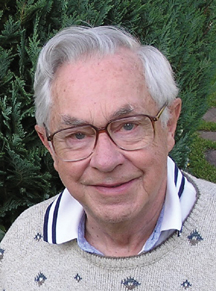Why LightSquared’s Proposal to Operate at Reduced Power Won’t Work
Editor’s Note: This article was recently updated because further experimentation by the author showed an erroneous conclusion concerning the upper frequency limit of fifth order distortion products.

Many interested parties already know that the testing of LightSquared scheme to transmit terrestrial signals in spectrum adjacent to the GPS Band (1559-1610 MHz) using two 5 MHz wide LTE signals: 1526 – 1531 MHz and 1550 – 1555 MHz failed. Most, if not all GPS receivers suffered jamming. LightSquared admitted this in its Final Report to the FCC delivered June 30.
While the industry agreed upon test plan did not include tests with a single 5 MHz LTE signal, such tests were indeed run. They demonstrated much less jamming. The difference was deemed impressive at least to LightSquared so they have proposed to change its initial transmissions to one 10 MHz wide LTE signal only: (1526 – 1536 MHz). Note that I used the word initial because while their business plan called for two 10 MHz-wide LTE signals, the initial use of one temporarily cuts their capacity in half. That means some of the promises made to the FCC cannot be fulfilled without their finding additional spectrum.
POWER LEVEL DIFFERENCE
LightSquared has also proposed to initially operate at “reduced power.” But what does this mean? The FCC has authorized them to use a maximum Effective Isotropic Radiated Power (EIRP) of 72 dBW. Gosh, what is that? Well 62 dBW = 1584 watts. That is the EIRP at which they tested with one 10 MHz signal (1526 – 1536 MHZ) so their maximum authorized power is actually 15.84 kW. Anything less would be “reduced power.”
So is this power level difference significant? I believe it is critical.
Tests with two LTE signals (1526–1531 MHz and 1551–1556 MHZ) generated third order (IM3) up to 2* 1556–1526 MHz = 1586 MHz. Many of these IM3 products fell in the GPS band centered at 1575 MHz. That problem would be solved if the upper LTE signal were not radiated. The highest IM3 frequency the lower LTE signal can generate is 2*1536–1526 MHz = 1546, which is below the GPS band.
DESENSITIZATION & HIGHER-ORDER IM PRODUCTS
However, there are at least two other mechanisms by which this lower LTE signal can jam GPS receivers: The first is de-sensitization. The LTE signal is about 100 dB stronger than the GPS signal at the input of GPS receivers. The LTE signal can generate a third-order distortion product, which reduces the gain of the GPS receiver front-end. The other mechanism is higher-order IM products, such as ninth order (IM9).
You might wonder if ninth-order distortion products could be significant. I believe the answer for GPS receivers is yes, because of the 100 dB difference in the power of the LTE signal versus the GPS signal.
Compare this adjacent channel situation with that of our DTV signal. The FCC channel allotment plan keeps that D/U ratio below –28 dB; the LTE/GPS ratio is 100 dB minus whatever RF selectivity is between the antenna and the RF amplifier. That might be up to 24 dB, so we still have a D/U difference of –76 dB or more compared to the FCC Rules for DTV.
As most GPS receivers run their low-noise amplifier at fixed gain, (no RF AGC) the LNA must provide its maximum gain to GPS signals around –130 dBm and would have to be linear when also amplifying LTE signals around –30 dBm.
This implies that their dynamic range is over 100 dB. Wow! And the mixer must also have this much dynamic range. Wow, again!
Most mixers require that the injected Local Oscillator Power exceed the maximum signal power by over 10 dB. So the LO must provide a very strong carrier, (above –20 dBm). This is a really tall order.
A front-end design meeting these requirements will require a lot of DC power. Handheld GPS receivers are presently designed for good battery life so transistors in the front-end are deliberately starved of current. That means a strong interfering signal will be partially rectified in the receiver frontend.
The LNA and mixer will not be operating in Class A (linear devices), but perhaps as Class C amplifiers, which are highly nonlinear.
Tests conducted by the Technical Advisory Group were go/no go tests of the two LTE signals proposed by LightSquared. They were not designed to identify the various interference mechanisms that caused jamming of GPS signals.
Hence, we don’t know what needs to be improved to design more robust GPS receivers, nor how much improvement would be needed. Those test results will be covered in my next column.
Charles Rhodes is a consultant in the field of television broadcast technologies and planning. He can be reached via e-mail at cwr@bootit.com.
The professional video industry's #1 source for news, trends and product and tech information. Sign up below.
